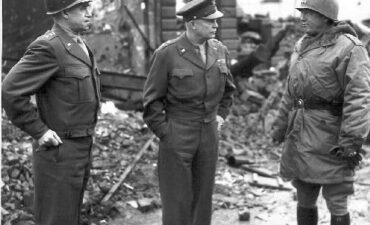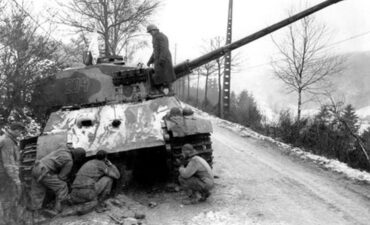How did Julius Caesar defeat Pompey at the Battle of Pharsalus? Julius Caesar’s victory over Pompey in the Battle of Pharsalus on August 9, 48 BCE, was a pivotal moment in the Roman Civil War. Here’s how Caesar managed to defeat Pompey:
Preparation and Strategic Positioning
- Choice of Battlefield: Caesar chose the plain of Pharsalus, a location that provided a tactical advantage for his smaller but more experienced and disciplined army.
- Army Size and Composition: Caesar had about 22,000 men and 1,000 cavalry, while Pompey commanded around 45,000 infantry and 7,000 cavalry. Despite being outnumbered, Caesar’s forces were battle-hardened and loyal.
Tactical Deployment
- Formation: Caesar deployed his army in a traditional Roman formation with three lines of infantry. His right wing was bolstered by a small but highly effective cavalry unit.
- Reserve Forces: Anticipating Pompey’s numerical superiority in cavalry, Caesar created a fourth line of reserves (cohort) hidden behind his right wing. These were meant to counter any cavalry attack.
The Battle Unfolds
- Pompey’s Initial Plan: Pompey relied on his superior cavalry to outflank Caesar’s right wing and attack the rear of his infantry. He placed his cavalry on the left wing, supported by archers and slingers.
- Cavalry Clash: As Pompey’s cavalry charged, Caesar’s cavalry initially retreated but then regrouped and launched a counterattack. At this critical moment, Caesar’s hidden fourth line of infantry attacked Pompey’s cavalry, causing them to panic and flee.
- Breaking the Flank: With Pompey’s cavalry routed, Caesar’s forces turned to attack Pompey’s vulnerable left flank. The disciplined infantry of Caesar’s fourth line played a crucial role here.
Decisive Maneuvers
- Infantry Engagement: As Caesar’s men advanced, the morale of Pompey’s forces began to waver. Caesar’s legions, using their superior discipline and experience, began pushing Pompey’s infantry back.
- Pompey’s Retreat: Realizing the battle was lost, Pompey fled the field, eventually escaping to Egypt where he was assassinated shortly after.
Key Factors in Caesar’s Victory
- Superior Tactical Awareness: Caesar’s ability to predict and counter Pompey’s cavalry strategy was crucial.
- Experienced Troops: Caesar’s soldiers were veterans, highly trained and loyal, which gave them an edge in discipline and effectiveness.
- Flexible Strategy: Caesar’s strategic use of a reserve line to surprise and counter Pompey’s cavalry was innovative and effective.
Aftermath
Mopping Up: After routing Pompey’s forces, Caesar consolidated his position, further cementing his power and leading to the eventual fall of the Roman Republic and the rise of the Roman Empire.
The Battle of Pharsalus demonstrated Caesar’s military genius, combining strategic foresight, tactical innovation, and the effective use of his troops to achieve a decisive victory against a numerically superior foe.










